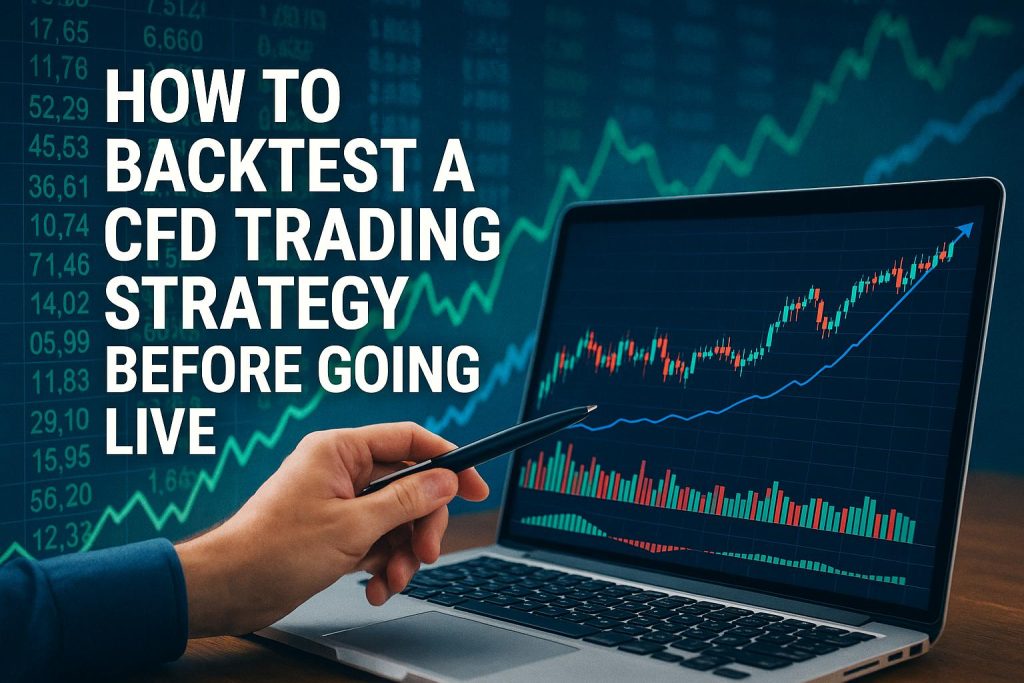
Backtesting is a crucial step in validating any trading strategy. When trading Contracts for Difference (CFDs), backtesting allows traders to assess how a strategy would have performed using historical data. This process helps in understanding potential risks and rewards, ultimately aiding in the refinement of the strategy before deploying it in live markets.
Backtesting involves testing a trading strategy on historical data to evaluate its past performance. This is done by simulating trades according to the strategy’s rules and parameters. The primary goal is to determine if the strategy is viable and profitable over time.
Access to comprehensive historical data, including price movements, volumes, and other relevant market information, is essential to start backtesting. Data should be accurate and cover different market conditions to ensure the robustness of the backtest. Many brokerage platforms and third-party services provide such data, sometimes at a cost, to help traders gain valuable insights.
Choosing a reliable platform or software for backtesting is essential. Many trading platforms offer built-in backtesting capabilities. Popular options include MetaTrader 4/5, TradingView, and NinjaTrader. These platforms typically offer scripting languages, such as MQL for MetaTrader, which allow you to code and test your strategies directly.
After acquiring data and selecting a platform, the next step is setting up the backtest.
To ensure effective backtesting, you must clearly define your CFD trading strategy’s rules and parameters. This encompasses entry and exit signals, risk management rules, position sizing, and any other conditions critical for executing trades. Ensuring these parameters are realistic and align with your trading style is vital for obtaining accurate backtest results.
Backtesting involves simulating trades based on your strategy’s parameters. During this process, the software applies your rules to the historical data, executing trades as they would occur in a live trading environment. This generates performance metrics crucial for assessing the strategy’s viability.
Once backtesting is complete, it is crucial to analyze the results to evaluate the strategy’s effectiveness and potential profitability.
When analyzing backtest results, consider several key performance indicators:
– Profitability: The total profits versus total losses determine whether the strategy can generate a net positive return.
– Risk-Reward Ratio: This measures the average profit compared to the average loss and helps establish appropriateness regarding trade-offs between risk and return.
– Drawdown: The largest percentage drop from a peak to a trough in a portfolio, which helps to understand potential risk exposure.
– Sharpe Ratio: A measure of return per unit of risk, providing insights into the efficiency of the strategy.
Analyzing these metrics offers valuable insights into the strengths and weaknesses of the trading strategy.
Based on the analysis, you may decide to proceed with the strategy, abandon it, or make adjustments to enhance performance. Fine-tuning can involve changing specific parameters, adopting additional risk management measures, or even altering the entire approach to improve potential outcomes.
Backtesting is an essential step in developing any CFD trading strategy. This rigorous evaluation process on historical data allows traders to gain confidence in their strategy’s potential performance and risk management before deploying it live. Implementing these backtesting steps ensures that your trading strategy is well-prepared to tackle real-world trading challenges. For those seeking further guidance on CFD trading and backtesting, numerous online resources are available to expand your knowledge and enhance your trading expertise.
Expanding on the foundational aspects of backtesting, it is important to recognize various techniques employed by traders to refine their strategies effectively.
Beyond in-sample testing, out-of-sample testing is essential. This approach divides the historical data into a testing dataset different from the one used for strategy development. By evaluating a strategy on a separate dataset, traders gain a more objective view of its real-world performance potential.
This type of backtesting involves sequential testing and optimization. The strategy is tested on a historical period before being optimized, then applied to a subsequent period. This cyclical process helps simulate adapting to changing market conditions and enhances the strategy’s robustness.
While backtesting offers numerous benefits, recognizing inherent challenges is critical to ensuring its effectiveness.
High-quality data is crucial for valid backtesting results. Inaccuracies or gaps in historical data can lead to skewed results, compromising the reliability of the backtest. Access to reliable data providers and cross-referencing data from multiple sources can mitigate this issue.
One common pitfall in backtesting is overfitting, where a strategy is excessively optimized to perform well on historical data at the expense of future performance. To avoid this, the strategy should maintain simplicity and logic that continues to apply across different market conditions.
Market conditions are dynamic, and strategies that perform well in historical contexts may not necessarily replicate their success in current or future conditions. Traders need to remain adaptive, continuously evaluating and refining strategies based on ongoing market developments.
Incorporating technological advancements can enhance the efficiency and scope of backtesting efforts.
Many traders utilize algorithmic systems that autonomously execute trades based on predefined criteria. These systems benefit from continuous testing and backtesting, allowing them to adapt rapidly to market changes and optimize performance.
Utilizing machine learning algorithms and artificial intelligence can uncover complex patterns and correlations within large datasets that may elude traditional analysis techniques. These advanced tools help traders refine their strategies more effectively and adapt to diverse market scenarios.
Backtesting plays a pivotal role in the development of robust and successful CFD trading strategies. By continuously refining and validating strategies through backtesting, traders can enhance their confidence and decision-making in the live markets. Remaining adaptable to market changes and leveraging technology further can improve strategy performance, ensuring strategies remain effective in ever-evolving trading environments. Utilize available resources and advanced techniques effectively to maintain a competitive edge in the trading landscape.
This article was last updated on: September 8, 2025